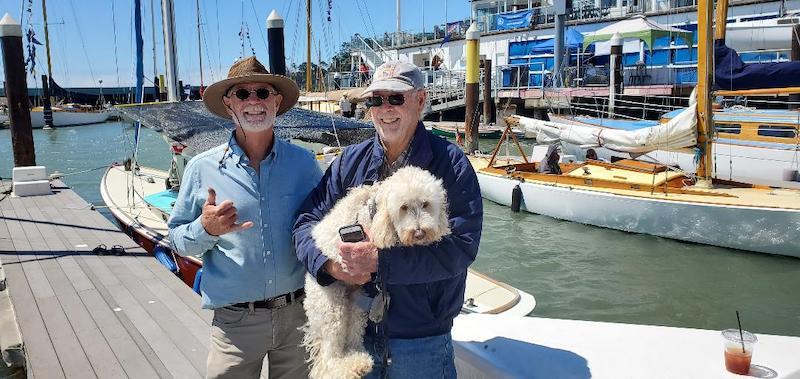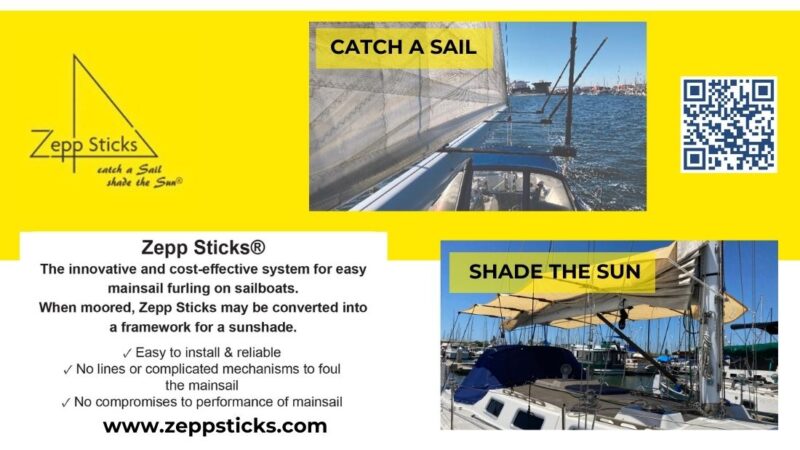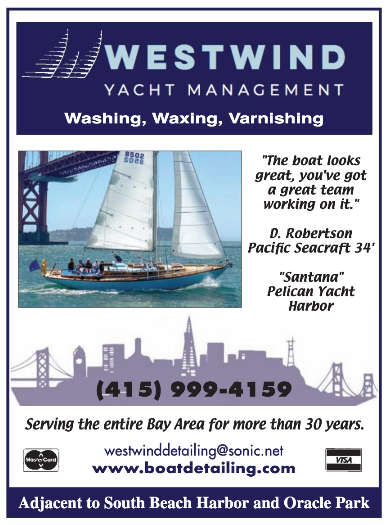
USCG Completes Cleanup After Decommissioned ‘Aurora’ Refloated in Delta
If you’ve sailed in the San Joaquin Delta, you might have seen a small, decommissioned cruise ship languishing on the river northwest of Stockton. The Aurora, a nonoperational 294-ft cruise ship, had been permanently moored in Little Potato Slough. On May 22 she began sinking, spilling contaminants into the water. The US Coast Guard now says it has completed its pollution response to the sunken vessel.
The sheriff’s office said Aurora had “suffered a hole” and began taking on water. A sheen of diesel and oil was observed, and the San Joaquin sheriff’s department deployed 200 feet of absorbent boom around the vessel and sensitive sites.
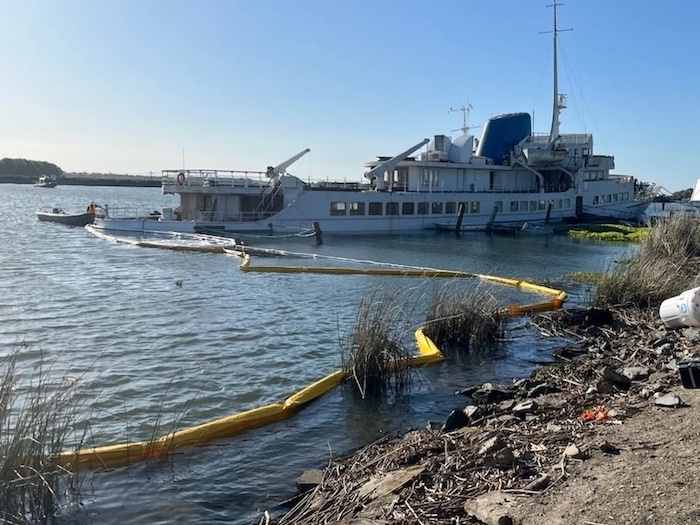
The pollution cleanup was accomplished over several weeks by response contractors Global Diving & Salvage and subcontractors. The vessel was refloated, and an estimated 21,675 gallons of oily water, 3,193 gallons of hazardous waste, and five 25-yard bins of debris were removed from the vessel.
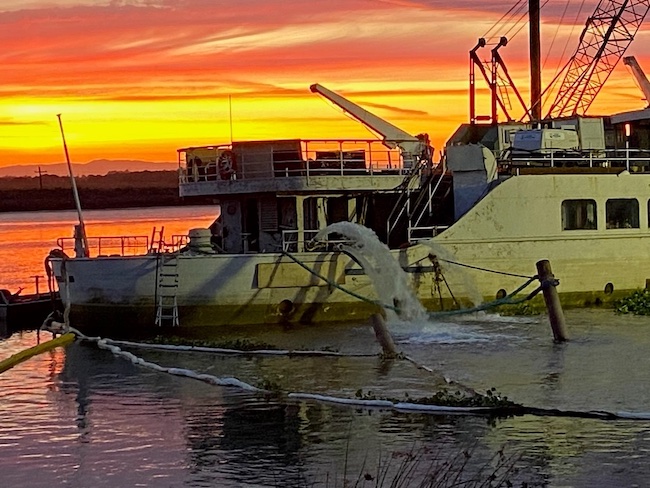
The Coast Guard reports, “Extensive surveys suggest no recoverable oil remains onboard,” and that there were no observations of oiled wildlife throughout the response.
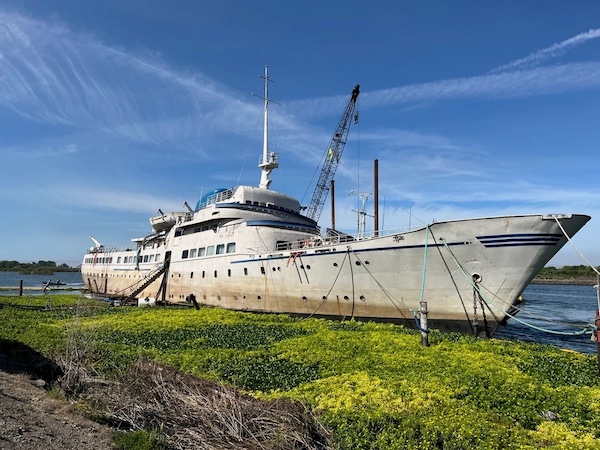
The Maritime Executive reports, “While agencies consider the various options for removing the ship from its current berth, the City of Stockton has hired a contractor to keep bilge pumps on the vessel running in order to prevent it from sinking again. The containment boom will remain in place as a precautionary measure.”
Master Mariners Wooden Boat Show Stuns the Crowd Again
Our Maine Coast sailing roots helped create a fond attachment to classic wooden boats. However, a visit to the Master Mariners Wooden Boat show demonstrates that people from all walks of life can get infected by the compelling allure of wood. The gleaming varnish, the quiet tone and unique smell in the cabin of a wooden boat, the craftsmanship and hours of labor that go into maintaining a wooden boat, all combine to draw a dedicated cohort of passionate sailors into this close-knit club. Yes, they may all be crazy, but it’s a craziness all sailors can appreciate.

Not everyone has the skill, time, heart or budget to take on a wooden boat, but all sailors are glad that the members of the Master Mariners Benevolent Association are there to unite this group to organize and host the Wooden Boat Show at the Corinthian Yacht Club. The event attracts a wide selection of boats that are open and available for gawkers and aspiring wooden-boat owners to climb aboard and admire.
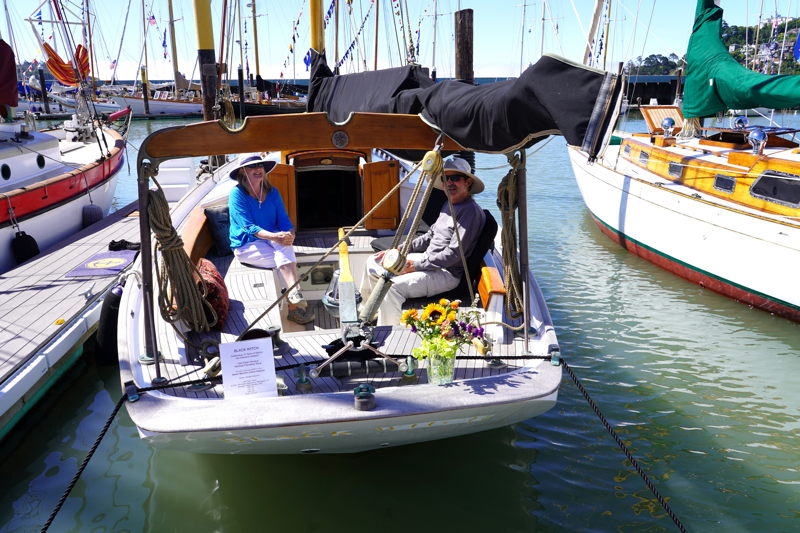
How did they all get this crazy? Sandee Swanson can’t really explain. After 25 years of running the successful fiberglass catamaran charter boat Apparition out of Schoonmaker Point Marina, she decided to “retire” to a wooden boat. As she described it, it sounds more like retiring from a vacation life to take a full-time job. Taking guests out on the Bay aboard Apparition sounded like less work than maintaining her 75-year-old Ralph Winslow Friendship sloop Black Witch. But people fall in love. Sandee now owns a “leaner” and is happy to be learning new skills and maintaining the immaculate sloop now celebrating her 75th anniversary since launching. She was built at Wilmington Boat Works in Wilmington, CA, in 1949, when California was full of wood-boat craftsmen.
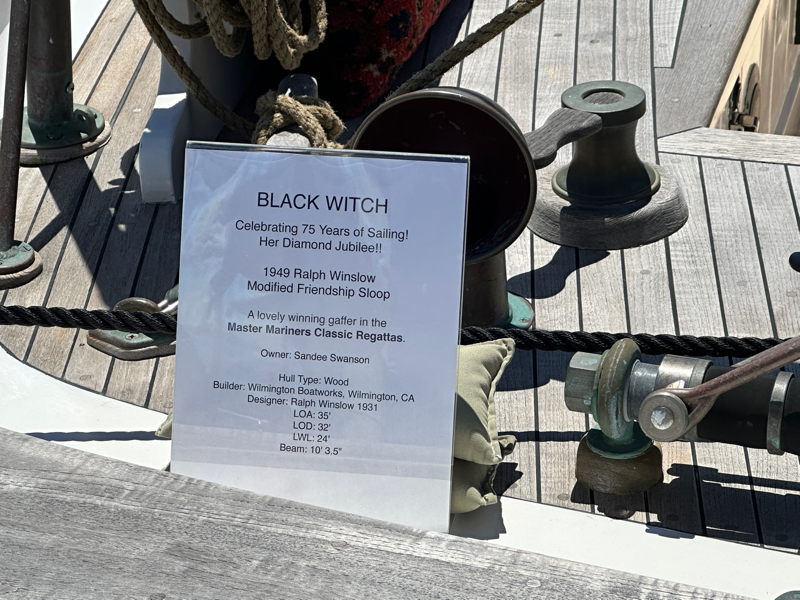
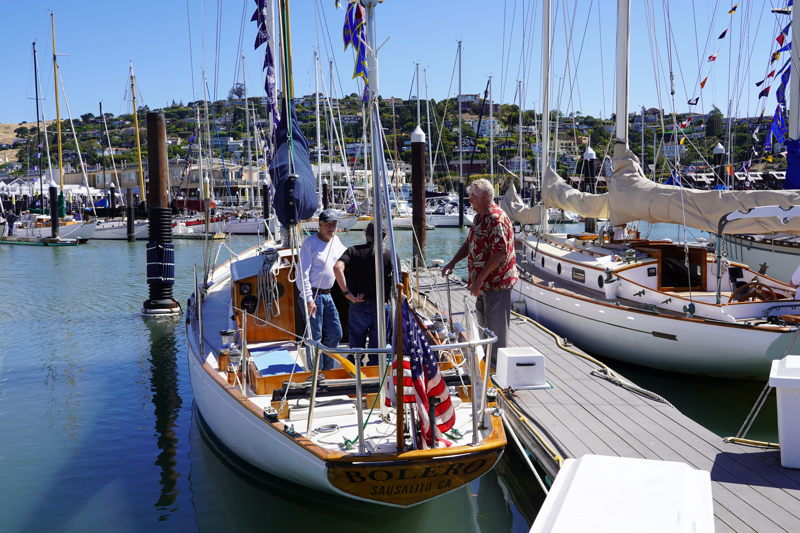
We stopped by to see Tim Murrison aboard his 44-ft Davis sloop Bolero, launched in 1946, and he told us he’s “almost done” with his 35+ year project boat. He’s built the spar, redone the hull, and also won a lot of races with this 44-footer that sports a beam of only nine and a half feet. A modern 44-ft boat is probably four- to five-ft beamier.
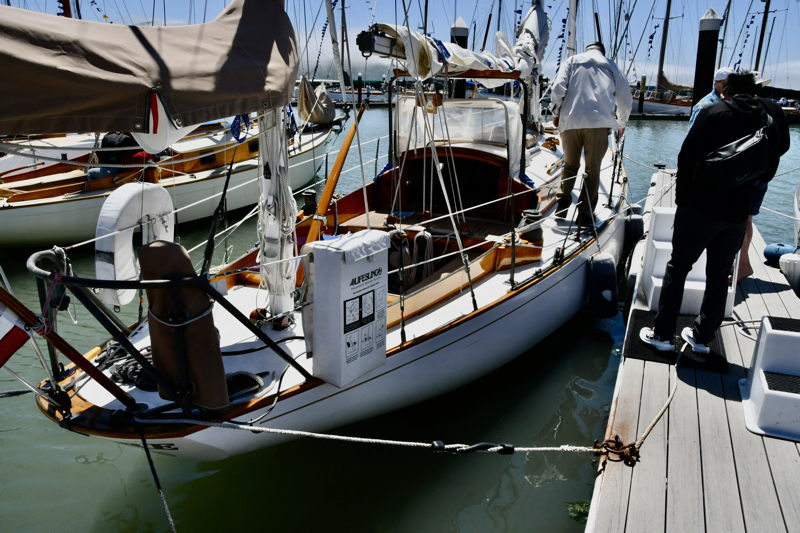
The Concordia yawl Encore is one of 103 Concordias built since the C. Raymond Hunt design was introduced in Massachusetts in 1938. It’s one of the the largest classes of one-design, racer-cruiser keelboats ever built, and they turn heads wherever they sail or dock.
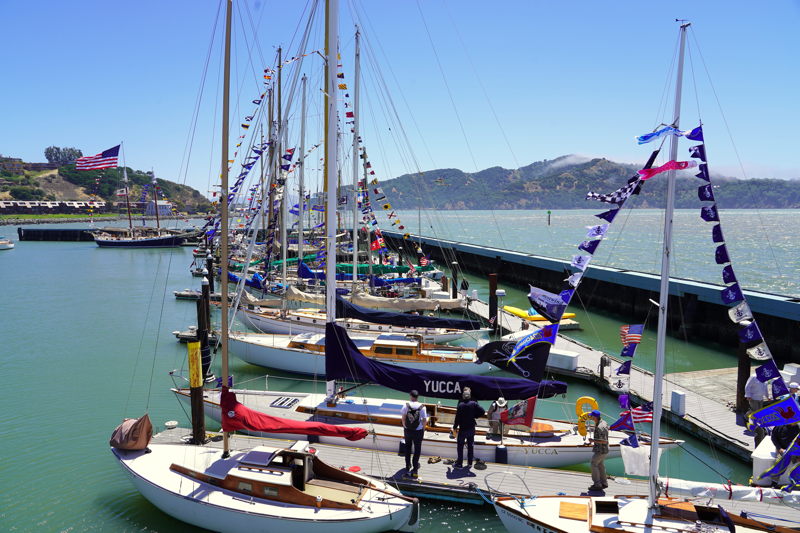
With flags flying, the fleet of well-cared-for classic boats made the Corinthian home for the Summer Sailstice weekend. The Sunday of the show was cool and breezy, but it kept pennants flying crisply in the fresh air.
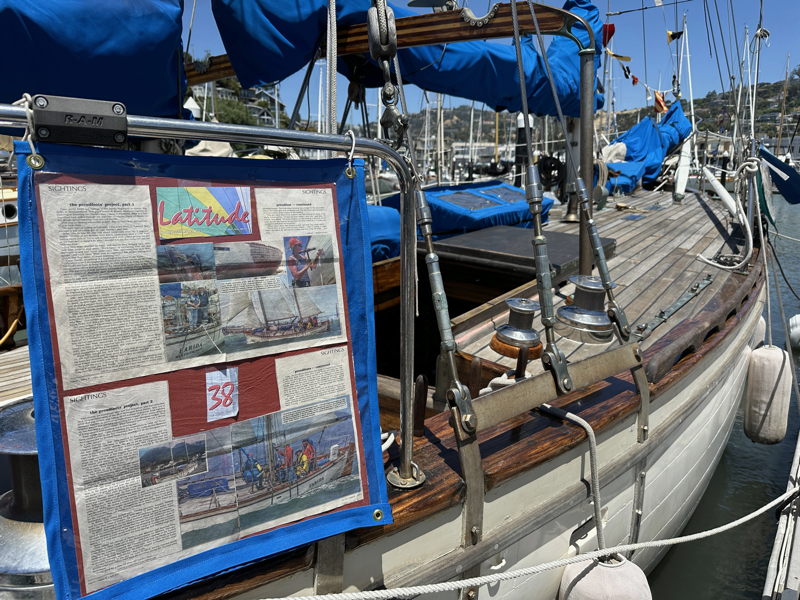
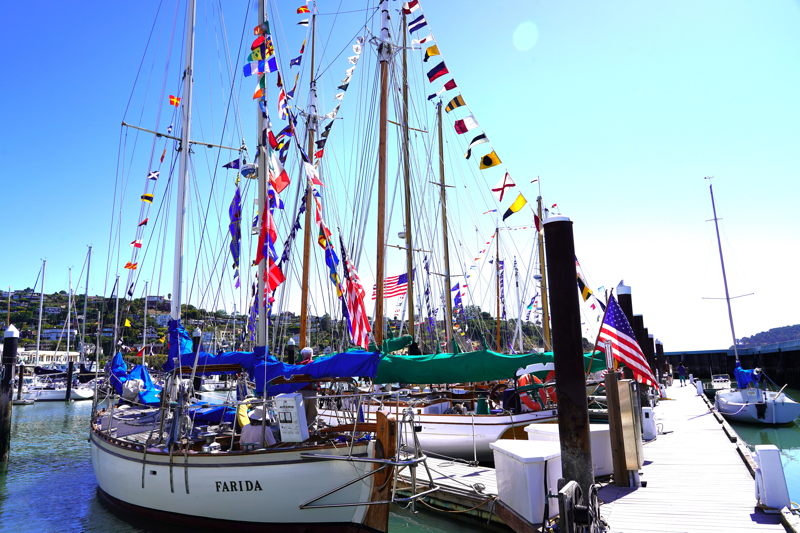
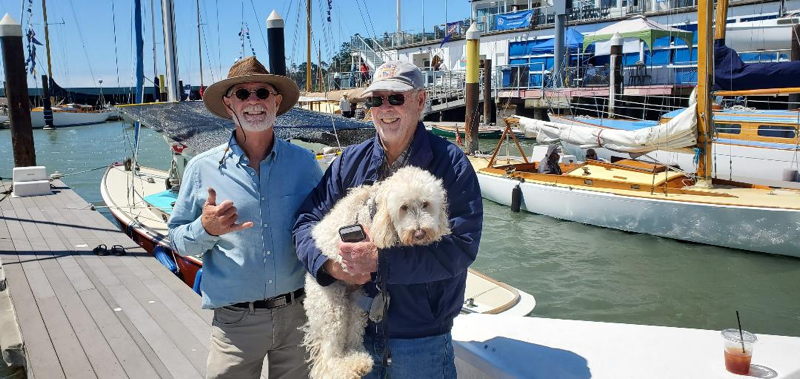
Jim Linderman Jr. and Sr., above, are renowned sailors, craftsmen and shipwrights. Jim LInderman Jr. skippered and maintained wooden boats in Europe for many years, but is now back in the Bay Area helping care for some of the local fleet, including work now being done on Ocean Queen. Jim Linderman Sr’s long history with wooden-boat caretaking could fill a book and goes back to helping Harold Somers with Wanderbird on the Sausalito waterfront.
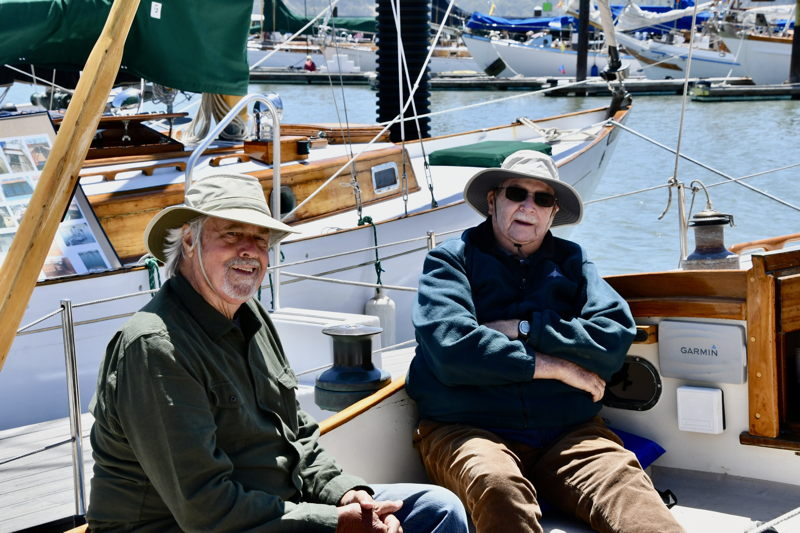
Stop by a wooden boat at the show and you can admire the craftsmanship and hear a few sailing “yarns” from owners who’ve typically owned and cared for them for decades. Robbie Robinson was there aboard his Myron Spaulding-designed 38, Nautigal, launched in 1938 from the Anderson and Cristofani boatyard in Sausalito.
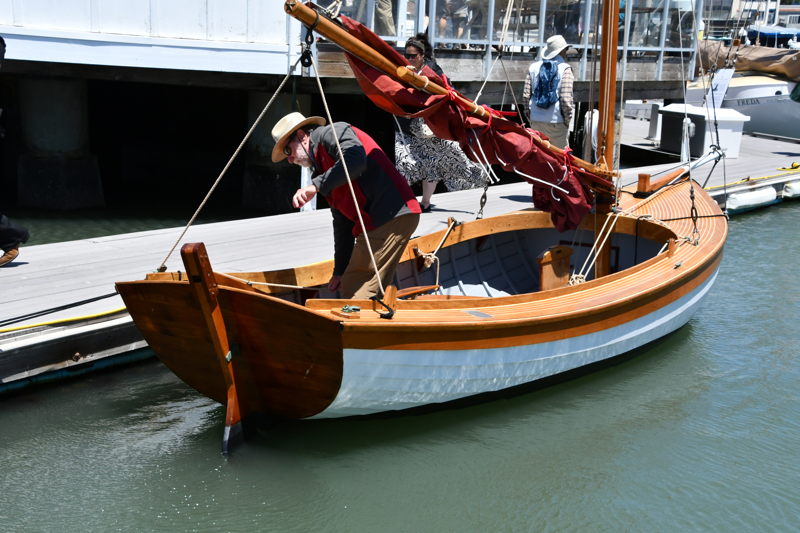
It’s often hard to discover the hidden wooden gems that hide amongst the sea of fiberglass that inhabits most Bay Area marinas. Once a year they all get together to show off the results of their stewardship of these beautiful boats, which, despite their age and beauty, can often be seen taking on the cold salt-air breeze of San Francisco Bay.
It may appear crazy to those who struggle to maintain a fiberglass boat, but it’s the kind of crazy that causes folks to fall in love. Once you step aboard to walk the decks or go below and finally meet the owners from this dedicated community, you start to come under the spell. It’s a community of people who bond over the appreciation, beauty and tradition that come from centuries of sailing heritage.
The show is put on by the Master Mariners Benevolent Association, which uses money raised from the show to support youth in learning the trades and craftsmanship of wooden boats.
Here’s a small photo gallery we put together. All photos were taken by John “Woody” Skoriak. Enjoy!
Catch a Sail or Shade the Sun With Zepp Sticks
Another New West Coast Circumnavigator Joins the List
Our recent story about seeking West Coast circumnavigators has unearthed another round-the-world sailor. Timothy (Tim) Brill completed his voyage aboard the 1972 Islander 36 Intrepid — the same Islander 36 previously owned by fellow circumnavigator Zack Sunderland.*
Tim’s circumnavigation began from San Diego in November 2017. He sailed by way of San Diego – Cabo San Lucas – Puerto Vallarta – Marquesas – Tahiti – Moorea – Bora Bora – American Samoa – Fiji – New Zealand – New Caledonia – Papua New Guinea – Indonesia – Malaysia – Thailand – India – Maldives – Seychelles – Madagascar – Mozambique – South Africa – Brazil – St. Lucia – Bahamas – Panama – Costa Rica – Mexico. He completed his voyage in Mexico in April.
Along the way Tim put together this video. It’s 9:57 minutes long, but filled with great footage of his voyage, complete with onboard repairs.
After completing his voyage Tim is putting all his sailing experience to good use with his own delivery service, Intrepid Yacht Delivery Services. And if you have any doubt he can complete the job, his experience reads: “Soldier, Mountaineer, Pilot, Sailor, Author and Father to three boys. Besides being a Professional Pilot, Tim has logged over 45,000 sea miles with three Baja Ha-Ha’s, one circumnavigation, and has crossed the equator four times! Plus don’t forget the French Canals and the Bahamas!”
He also holds a US Coast Guard Merchant Mariner Credential, Master of Self-Propelled Vessels including Sail or Auxiliary Sail of less than 25 gross register tons (GRT), along with ASA 101,103, 104, 105, and 106.
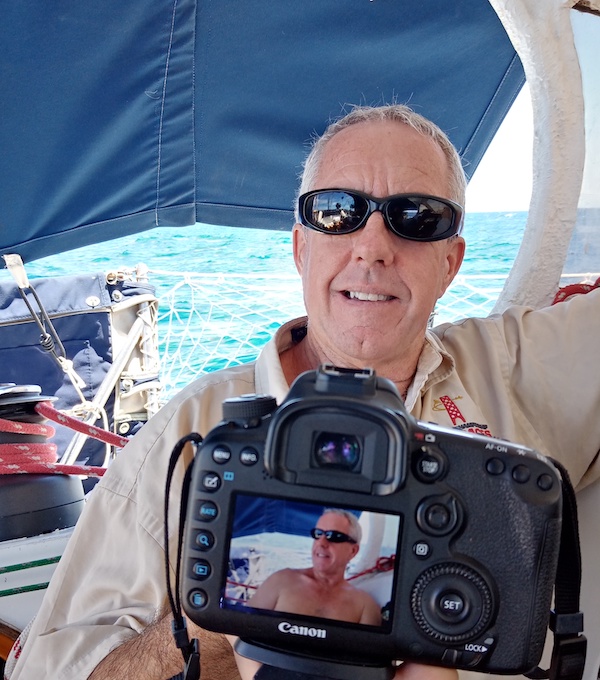
*Zack Sunderland completed his round-the-world voyage in 2009 at age 17.
We also heard from Michael and Susan Beilan, who circumnavigated aboard their Westsail 43 INFINI from 2007-2017, starting out of New Port Richey, FL.
Going to Mexico Later This Year? Practice Your Dinghy Beach Landings First
While scrolling through our archives, searching for something we’ve long since forgotten, we came across a story on page 158 of our December 2006 issue about landing dinghies on beaches. The story describes dinghies being caught by the small onshore waves and being swamped, tipped over sideways, or even flipped bow over stern. Any of those options can be dangerous. Fortunately, the story includes some handy tips on how not to get “tipped.” With summer in full swing and the sailing-to-Mexico season right behind that, we thought it would be good to revisit this story, and hopefully help sailors execute safe beach landings in the future.
One of the scariest things in cruising is watching novices make beach landings through the surf in their outboard-powered inflatables. Their lack of skill is understandable in the sense that few of them have had any practice. We don’t know of anywhere in the States where beach landings are common, but in Mexico, cruisers want to or have to make beach landings all the time.
Nobody should underestimate the power of waves — even two-footers — to do harm. They can flip or roll inflatables. If the kill switch isn’t activated on the outboard, the props can rip through human flesh almost like a chain saw. The results are something you never want to see.
The good news is that with some education and experience, even novices can become pretty good at beach landings. Copying what other obviously skilled dinghy operators do is one good way to learn. It also helps if you’re a decent body surfer who feels confident in the waves and the ocean, because most bodysurfing principles apply to dinghy landings and launches.
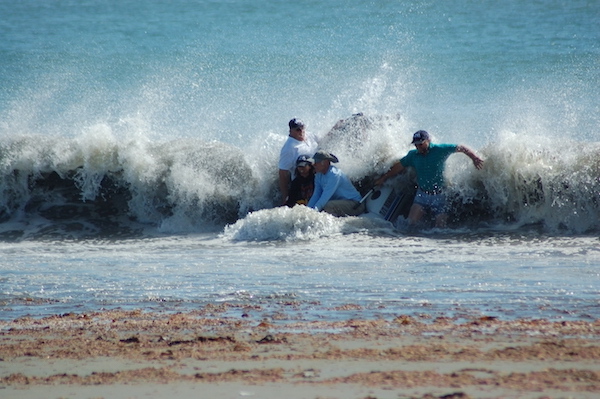
In an attempt to help novices out, we’re going to offer some general tips, and advice for taking your dinghy in through the surf as well as out through the surf. These are rough guidelines only, and there can be situations in which they don’t apply, so the final decisions on what to do are up to you.
General Rules
1) Never turn your back to the ocean. This is the rule of all rules, what all Hawaiians teach their children, and will prevent most of the worst disasters. Nonetheless, novice dinghy operators do it all the time.
2) Don’t dawdle. If you’re coming in with the waves, you’ll only have about 20 seconds to do your business right. If you hesitate, you’re gonna get drenched or dumped. The bigger the waves, the more important the speed. Going out through the surf, you have even less time because you and the waves are approaching each other as opposed to going in the same direction.
3) Be patient. Waves come in sets, so it makes sense to wait until there is a lull. On days when there are big waves, you may have to wait five, 10 or even 15 minutes for an advantageous time to make your move. We once watched a hardened panganero hover for 15 minutes behind the breakwater at Punta Mita before he made his run for it.
4) Not all landing sites are equal. If a beach is straight and the swell is coming straight in, you don’t have much choice. However, many beaches are curved. The most inside spot, where you’d anchor your boat to avoid the worst of the swell, frequently has the smallest surf.
5) Always have the kill-switch line attached to your body, so if you dump, the prop will be stopped. Twice in the last two years Ha-Ha participants haven’t followed this critical guideline, and twice they came within inches of slicing up their backs.
6) Don’t overload the dinghy. It’s safer to make two underloaded trips in and out than one overloaded trip. If you’re overloaded, you don’t have the speed necessary to be nimble.
7) Never turn your back on the ocean. It can’t be emphasized enough.
Techniques for Dinghy Landings in the Surf
While looking back at the ocean, evaluate the size and consistency of the swell and the best place to make a landing, and prepare for your assault on the shore. Preparations include making sure the kill-switch line is securely attached to your wrist, that the kickup lever has been activated so the engine will tilt up when it hits bottom, that whatever gear you have is properly stored, and that everybody in your boat is poised for hopping out of the dinghy the instant your shoreward motion runs out of steam.
Westwind Yacht Management — Washing, Waxing and Varnishing
Westwind Yacht Management: Premiere Yacht & Fleet services for the San Francisco Bay Area.

